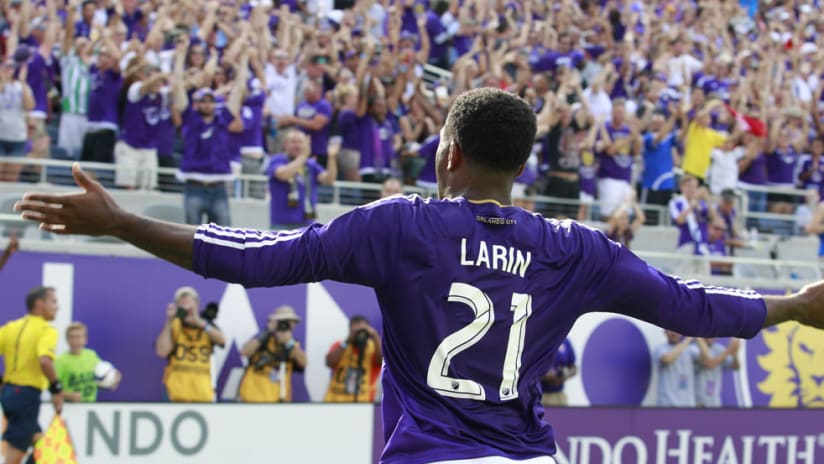As the years go on, the SuperDraft is not the same roster-building mechanism that it used to be. Teams are investing millions in their academies for a reason; teams are adding USL clubs for a reason; teams are increasing their overseas scouting budgets for a reason. They don't want to rely upon a bad season, a good draft pick and hoping that college potential translates to pro production. Moving away from the above as a primary roster tool was one of the benchmarks of what's colloquially been called MLS 2.0.
However, the SuperDraft is not dead. Cyle Larin's record-setting 2015 makes that point, as does the sight of teams like Sporting Kansas City and D.C. United (who crush the draft every year) making the playoffs season after season after season.
With that in mind, here's a look at three questions -- two broad-based, one player-specific -- that we'll need answers to over the next week during the 2016 adidas MLS Player Combine.
1. High Floor, Low Ceiling?
Larin deserved every bit of praise he earned this past season, but it's important to understand that he's the exception to the rule -- not just in terms of his particular draft, but in terms of the entire, two-decade history of MLS.
Rookies don't just come in and do that. Going from college to the pros at age 20 or 22 is a huge jump, and most kids end up failing. The lucky ones get into a system where they can develop over the course of a year or two and eventually work themselves into MLS contributors on one level or another. The very lucky ones end up like Matt Polster or Fatai Alashe or Tim Parker or Amadou Dia or Saad Abdul-Salaam: They find themselves on the roster of teams that believe in them, earn playing time and find a place in the rotation.
The common thread with those five players? All were graduating seniors, and none -- except perhaps Alashe, who missed the combine due to injury -- was considerd to be a particularly high upside talent on draft day, one year ago.
Obviously, assessments have changed after what each managed to accomplish in 2015, but I think we're starting to enter an era in which MLS front offices are more likely to look for a solid contributor than a potential superstar with their pick. The game-breaking attacking talent is someone you import from overseas or develop in your academy; the rugged and reliable fullback is someone you can find in the ACC.
Of course, if there's a Larin-type talent on the board, almost any team would take him. But given the conversations I've had with various front offices over the past year, I think more and more teams are asking, "Will he be a good pro?" rather than, "Will he be a franchise cornerstone?"
2. That Generation adidas Shine
Here's Ives Galarcep's reporting on the potential Generation adidas class:
That's Josh Yaro (more on him in a minute); Jack Harrison (M/W, Wake Forest); Richie Laryea (M/W, Akron); Julian Buescher (M, Syracuse); Omar Holness (M, North Carolina) and Andrew Tarbell (GK, Clemson).
There is, as of yet, no official confirmation that these deals are done, but Ives generally has his finger on the pulse better than anyone, so let's proceed with the above list.
What I'm wondering is how much GA status will help the above players in terms of where they go in the draft. In the past two years, we've seen four GA kids drop past 15, and the GA signings over the last half-decade (Michael Tetteh, Tyler Polak or Schillo Tshuma, anyone?) have been hit or miss.
So don't take a GA tag as a guarantee that any particular kid is a sure-fire top 10 pick. For every Larin, there's an Enzo Martinez, and the teams know that.
3. The Year of the 'Tweener
Yaro is a central defender from Georgetown, and he actually would have gone No. 1 over Larin last year. That's how highly some scouts rate him.
However, he's a central defender, and he's 5-foot-10, and there aren't a ton of guys in the league at that spot who are less than 6 feet tall. Yaro covers a tremendous amount of ground, is strong and fast, and an off-the-charts athlete, but front-office types I've talked to have all brought up size as an issue. One has suggested that Yaro might be a better long-term fit as a Diego Chara-type defensive midfielder, and another says outside back.
A third says this: "When a guy doesn't really have a position, what do people say? 'Put him at right back.' That's code for, 'We don't actually know what to do with this guy.'"
Yaro's still No. 1 on most draft boards (and he will be on my first mock draft, coming later this week), but there's a legitimate worry that he might not actually have a snug fit on the field. The same goes for Harrison -- is he an attacking central midfielder or a winger? -- and Stanford's Brandon Vincent (learn more about him here), who spent two years in central defense before shifting to left back for his final two seasons.
Regardless, I still think those are the top three players in the draft. Whether the teams doing the actual drafting feel the same is something we'll all get to figure out next week.













